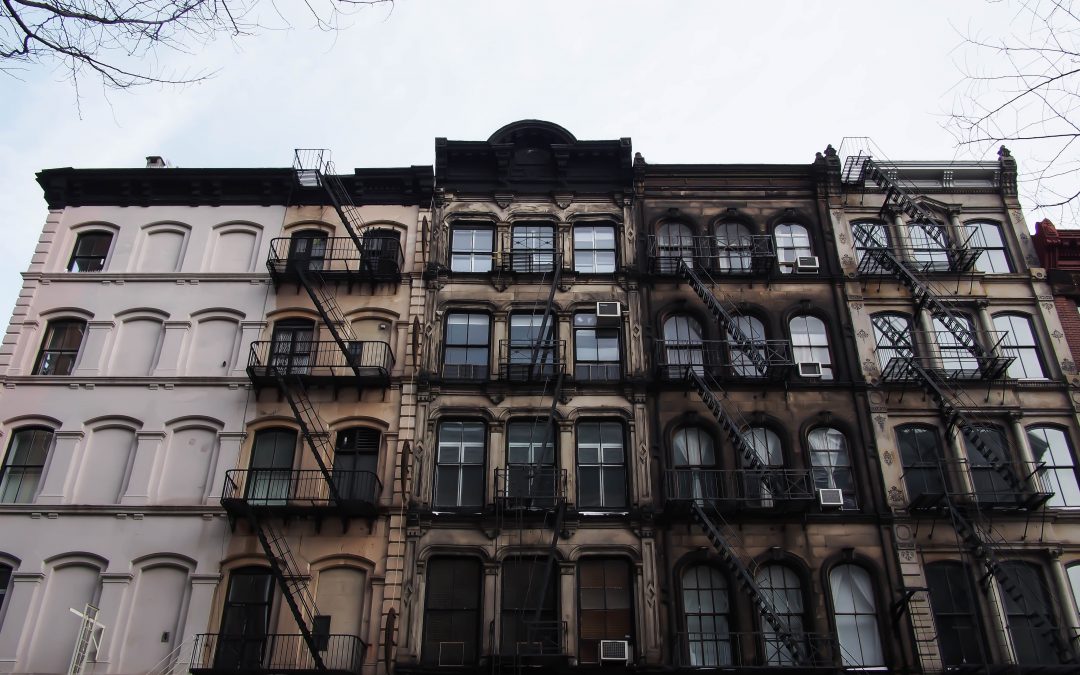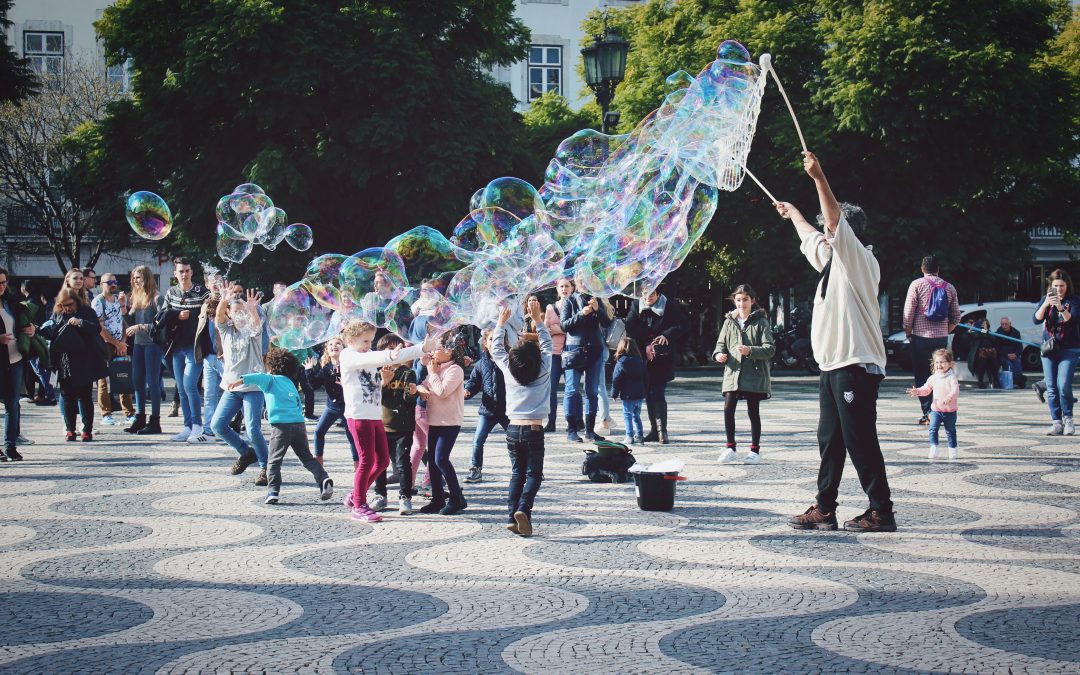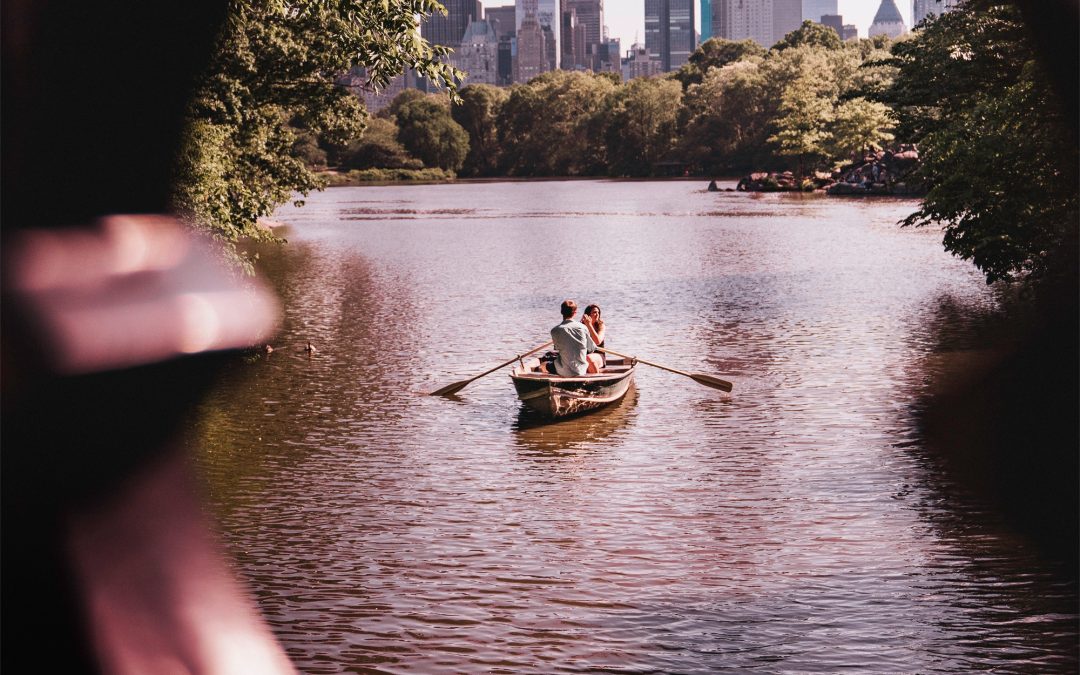
by BCB Property Management | Sep 20, 2016 | Neighborhoods, New York City
Slowly but surely, technology is digitizing the real estate market in ways we may never have guessed possible at the turn of the century. Instead of leafing through hefty paper listings, a new web of opportunities has surfaced at tips of our fingertips. These innovations are changing the game for buyers, renters, agents and developers, for better or for worse.
As it is, 68 percent of real estate agents are under 35, while 32 percent are under 25, meaning over half are millennials. They grew up with technology, and the best among them are utilizing their tech-savvy upbringing to cultivate successful careers in the industry.
Here are some of the top apps and services, born from technology, that are giving real estate insiders — as well as those that buy and rent from them — an edge:
Zillow & The Big Three
There’s a new way to find apartments, and while it sometimes goes by the name of Zillow, it’s a wider spread phenomenon with various names and faces — all of which live online.
“I spent hours on Zillow when looking for my current apartment,” said Brooklynite Jackie of her experience. “The map feature is particularly useful, because it compares costs and physical locations all at once.” Jackie was eventually able to find a great deal in Crown Heights.
Zillow is one of several leading rental-finding websites out there. The company owns StreetEasy, known for its quirky NYC subway ads, and Trulia, another serious force in the market (together, they can be considered the Big Three). Before these crop of startups became popular, Craigslist was a popular go-to for renters especially.
Before finding Zillow, Jackie and her boyfriend Matthew used Craigslist to find apartments to extremely mixed results.
“It’s much dicier,” Jackie says of the process. “People can put whatever they want on there, and it’s not always accurate. My mom was scammed once that way, so I definitely don’t trust it anymore.”
Now, the marketplace is rather crowded. Alongside the Big Three there’s Zumper, Lovely, Movement, and Urban Compass, PadMapper, RentHop, Naked Apartments, and plenty more. Many share the map layout, filters, and other search and listing features boasted by Zillow and its acquisitions.
According to BrickUnderground, even the Big Three differ in their algorithms and approaches, so it’s tricky to know what’s best, or even what’s most accurate. Whatever the case, the diversity of options gives renters an edge in finding what they are looking for, and both brokers and agents can find prospective tenants through the platforms. Other than that, it comes down to taste. Jackie says some of her friends use three or more to compare prices.
Of course, some realtors don’t like these services, and there are good reasons for their reservations.
Samuel Wood, NYS Licensed Salesperson for Island Beach Realty on New York’s Fire Island, does not use Zillow or its ilk. “Most of the information and addresses are incorrect,” he said, adding “I don’t regard any of their advertising impressions or views as legitimate leads.”
For other individuals in development and sales, it can potential buyers find their properties, and gives a sneak peak at the pricing of competitors in the neighborhood.
E-Signing
Paper is becoming increasingly unpopular, and worse, burdensome to the real estate industry. When you have to meet in person to sign or mail a document, that’s an extra barrier to entry.
“If I had the choice between two apartments that were equally nice,” Queens resident Ryan said, “I would definitely choose one that had the option of e-signing.” Ryan works long hours and has precious free time to spend. He also needs to move out of his current apartment and into a new one quickly, and can’t afford a delay.
“Once a landlord wanted me to go all the way to his office in the Bronx to sign a lease. That just seemed so unnecessary,” he said.
He’s not the only one, and many realtors and even landlords know it. It’s also easier for them make a deal if they don’t have to track down parties and deal with messy paperwork, after all. Digital signatures have been shown to improve turnaround-time by 80 percent.
Some of the leading e-sign platforms include DocuSign for realtors and DotLoop for brokers. Once this type of technology is adopted fully, paperwork will become much less of a pain, and perhaps fade entirely into obscurity.
Samuel Wood uses Adobe’s E-Signature for family vacation rentals. “Tenants can execute a lease by signing a document with their finger on a smartphone or tablet,” he said. “We receive positive feedback for making the booking process simple and instantaneous.”
Social Media & Marketing
You may still see flyers and magazines here and there, but by and large advertising real estate and real estate services has moved to the web. Getting listings out to buyers and renters, therefore, needs to happen primarily on the online where it can reach the most eyes.
As cofounder Bennat Berger of Novel Property Ventures wrote on his blog, “Disseminating your advertising onto different digital platforms…ensures that the listing isn’t overlooked. It also means that those browsing will have all the answers they want up front in terms of price and amenities, speeding up the process from first sight to lease-signing.”
For this reason, it’s important to take quality photographs of spaces for sale, writing clean and engaging copy, and even better, establish and maintain an online presence. Building your brand identity on Twitter, Facebook, and other high-trafficked social media platforms can help realtors and developers interact with potential customers and show off their expertise. Marketing teams can be huge assets on this front.
For the prospective buyer or renter, the more they can learn about and trust that the offerings meet their needs, the more favorable the entire experience will be.
It’s most helpful for those on the sales sade, however. According to Samuel Wood, the analytics are what make social media worthwhile. “You can create specific ads that target particular demographics, age groups, locations and interests….Digitally-savvy clientele love to get data traffic feedback from their listings.” Essentially, the analytics from social ads can inform whether to raise or lower listing prices.
It’s certainly true that technology has seeped into the industry for good, and it’s only a matter of time before it fully saturates. While disruptions like this will always have their downsides, industry insiders that follow the lead of digital trends are likely to generate the most leads in the end.

by BCB Property Management | Sep 8, 2016 | History, New York City
For many, it seems that “living the college life” is retaining popularity post-graduation.
Through dormitories, college students gain social experiences and a sense of community: they love having a common area in their living quarters to meet new people, live steps away from restaurants or coffee houses, and can being sociable whenever they choose. These perks aren’t limited to the campus anymore, having carried over into the real world through a living arrangement called coliving.
The lifestyle is a mix between student housing and hotels: a community designed to foster relationships while still maintaining a sense of privacy. It’s an ancient concept that, before physical privacy, thick walls and houses became standard, might have been considered plain old “living.” As recently as the late 80s the concept was adopted from Denmark and is flourishing in the United States today. Shared living spaces are becoming increasingly common in major cities across the country such as Washington, D.C. and San Francisco. The trend is also spreading internationally in Seoul and London.
According to James Scott, COO of London-based coliving developer The Collective, this concept is booming is because many people, Millennials in particular, value experiences over possessions. With rental services for transportation, movies and mobile phones, the generation is trading ownership for experiences. This living arrangement is all about the experiences, making it a great fit for young people.
WeLive’s 110 Wall Street in Manhattan boasts fitness classes, an arcade, cleaning services and potluck dinners included in the rent. There is also a digital social network exclusively for the community that can schedule meetups and events via an app. The community is designed for young professionals constantly on the move and features fully furnished, month-by-month apartments with studio, one- and two-bedroom units.
This lifestyle reflects the changing times, as millennials are constantly on the move from job to job. “The way work is changing,” said Brad Hargreaves, founder of Common, a coliving community with many locations in New York. “It needs to be a little easier for people to move without a traditional 12-month lease.”
In addition, millennials are delaying big milestones, such as purchasing property, to later in their lives; little surprise, seeing as they’re saddled with an average of $26,600 in student loan debt. Combine that with job-hopping and the desire for experiences, and you have the perfect storm for young people to flock to these coliving arrangements.
Although many millennials are accustomed to this living arrangement from college, coliving is not strictly for young people, and not only those who’ve gone to college. Depending on the surrounding environment and the nature of its tenants, some communities, such as WeLive and Common, attract older professionals and entrepreneurs. Other spaces are suited for families, singles, and retirees.
The Market Common in Myrtle Beach, S.C. has a mix of residential and commercial space that attracts families and retirees. The urban village features a variety of shops, entertainment and dining experiences while maintaining a sense of community with its residents. There are walking trails, a central playground and playing fields. A co-living community in Berkeley, California has strictly residential space, but fosters a community with shared meals, carpooling, movie nights and shared parenting life. The proverb “it takes a village to raise a child” accurately describes life in this Berkeley community.
Whether it’s a high-rise complex in the middle of Manhattan or a small community in a suburb, coliving is starting to become the next big trend in real estate. Since we are now all accustomed to spending time by ourselves in front of a screen, maybe it’s time to get out into the world and experience a new lifestyle. One that encourages us to bond with communities could be the panacea to our digital woes and price concerns alike.

by BCB Property Management | Sep 1, 2016 | Brooklyn, Neighborhoods, New York City
As evidenced by the plethora of apps and housing services that have cropped up in the past decade, NYC real estate is an industry unto itself. These companies have generated lots of data on a market that changes drastically from year-to-year. So if you’re approaching the NYC apartment hunt from a particular standpoint — for example, as a student — you can hone in on key variables and find the neighborhood that’s right for you.
For students, those key variables tend to include affordability, proximity, safety, subway access, and space. As a student, you may not need to be on campus everyday. Depending on your schedule, you may also be able to travel at off-peak times, which can be good for crowded train lines, but bad for catching an express. Or you may want to stick close to campus, to take advantage of the library, gym, and other facilities. You may be looking for a more spacious apartment if you intend to study at home, or for an area with lots of local coffee shop options. You might strongly prefer to live alone, to make studying easier — or you may be OK living with roommates, which will save money.
Whatever your situation, here’s a place to start — a list of some up-and-coming and tried-and-true neighborhoods in Manhattan and Brooklyn:
East Village/Lower East Side
In Manhattan your options are limited, mostly due to price. That said, the most viable downtown spots for students are the East Village and the Lower East Side. The Lower East Side is south of the East Village, but both are marked by older tenement walk-up buildings and a booming bar/restaurant/gallery scene.
While the Lower East Side and the East Village have a rich nightlife and history, compared to other neighborhoods, they lack options for basic neighborhood staples: food stores, gyms, etc. The Lower East side is most easily accessible by the J/M/Z/F/B/D subway lines, and the East Village by the 6/N/R/F/L.
Inwood/Washington Heights
At the opposite end of the island, you have Inwood and Washington Heights. Similarly old pre-war buildings in these neighborhoods provide more space this far north. Inwood is north of Washington Heights, and both are well north of Central Park, which might give some commuters pause. The rest of Manhattan is available by the A express train, however, and there’s nothing quite like the rush of entirely bypassing Central Park during rush hour.
Residents this far north have access to their own green space, and plenty of it. Inwood is quieter than Washington Heights, but both are relatively calm communities.
Clinton Hill/Prospect Heights
Clinton Hill and Prospect Heights are both old neighborhoods located north of Prospect Park–Brooklyn’s answer to Central Park. Clinton Hill is closer to the water while Prospect Heights is more south, closer to the park. Both have history, charm, and great food. Both are relatively quiet and safe and allow easy access to Fort Greene, Park Slope, and other surrounding neighborhoods.
Clinton Hill is slightly less accessible by the A/C/G lines, while Prospect Heights boasts access to the 2/3/4/5/B/Q lines.
Crown Heights/Bedford-Stuyvesant (Bedstuy)
Crown Heights and BedStuy are the Eastern counterparts of Clinton Hill and Prospect Heights, with BedStuy hugging the water and Crown Heights bordering Prospect Park. These neighborhoods are booming: both are culturally diverse and have lots on hand for food and entertainment.
As with Clinton Hill and Prospect Heights, Crown Heights has access to the 2/3/4/5 lines, and BedStuy to the A/C/G lines.
Greenpoint
For North Brooklyn, consider Greenpoint. Located above Williamsburg, Greenpoint similarly boasts great food and coffee. The sticking point is the impending 18-month shutdown of the ‘L’ train in January 2019, which will severely inhibit travel to Manhattan. The rest of Brooklyn is accessible via the G train.
Depending on how long your degree takes to earn, Greenpoint might be off the list or might actually be a cheap choice. Williamsburg has seen an influx of renters over the last decade, with prices rising accordingly, but the L shutdown could reverse that trend. Assuming enough viable travel alternatives to Manhattan — bus, ferry, Uber — Greenpoint could end up being a deal in the long run.
This list encompasses just a few of the perennial and newly minted options in Manhattan and Brooklyn, without even covering Harlem, Hamilton Heights, Murray Hill, Yorkville, Bushwick, Flatbush, Sunset Park, and Bay Ridge.
This still leaves us Queens, perhaps hottest borough right now in terms of real estate. Beyond Astoria, there’s plenty to consider with Sunnyside, Ridgewood, Woodside, Flushing, Jackson Heights, and of course, Long Island City. Check out Kingsbridge and Riverdale in the Bronx, as well as St. George on Staten Island.
All of these neighborhoods have lots to offer, but it’s best to start out with a list of what factors are most important to you, because the apartment hunt in New York city always demands some sacrifices. Good luck!

by BCB Property Management | Mar 14, 2016 | History, New York City
New York City boasts 28,000 acres of parkland; from an aerial view, this greenery pops amidst a sharp grid of gray buildings and roads. The parks that characterize the Big Apple range greatly in size and shape, from Staten Island’s sweeping Greenbelt to Septuagesimo Uno, an 140 square foot park in the Upper West Side.
NYC contains within its boroughs over 1,700 parks, some dating back to the 1600s. Parks have played important roles in New York City since America’s origin, and throughout the years have experienced periods of both neglect and rejuvenation. Today’s city parks are cleaner and safer than ever in no small thanks to a robust Parks and Recreation Department.
Here’s a look at three of the city’s most iconic parks, and how they have evolved over the years from colonial times to present day.
Bowling Green
New York City’s oldest park has been in use for 400 years, beginning in the 17th century when Dutch and English settlers used it as a cattle market and parade ground. The area was made into a park in 1733, paved with cobblestones in 1744, and under the control of the British used as execution grounds for Revolutionary prisoners. A statue of King George III was erected there in 1770 before being toppled (and recast as musket balls) after the Declaration of Independence was signed in 1776.
The park was improved with trees and grass in 1784, after which it quickly became a gathering place for public meetings and events throughout the 19th century. Presidential mansions were built there for George Washington to reside before the US capitol was moved to Philadelphia.
Though Bowling Green suffered neglect after WWII, the city restored it in 1970 and it’s since become one of the highest trafficked plazas in New York City. The tear-drop shaped park is a Historical Site and its Charging Bull statue a key fixture of the Financial District.
Central Park
The most famous park in NYC hardly needs an introduction. Central Park, designed by renowned landscape architect Frederick Law Olmsted with the help of Calvert Vaux, was the first public park to be built in America. Olmsted and Vaux won a design competition with a plan they called “Greensward Plan,” which profoundly shaped the most famous and frequently visited park in the world.
Central Park’s story dates back to New York City in the 1820s through 50s, when population quadrupled in a short period of time. When it became apparent that a public park would be needed for residents to escape the chaos of city life, the park was established in 1857. It was built on 778 acres of city-owned land, then expanded to its current 843 acres in 1873.
The park’s construction wasn’t immediately beneficial for all, however. The designated land had inhabitants at the time: free blacks and Irish immigrants who had built communities there complete with farms, churches and cemeteries. Some 1,600 people were evicted in the construction process overall.
Once built, Central Park would go through various phases of decline and revival. The park’s first decline came right after it’s construction and lasted through the turn of the 20th century before being cleaned up in the 1930s. In the 1960s Central Park became host for political and cultural events, and saw a second decline before undergoing renovation in the 80s, 90s, and early 21st century.
Prospect Park
Also designed by Olmsted and Vaux, Brooklyn’s Prospect Park has a history far older than its creation in 1867. Mount Prospect, located in the middle of the park, was forged by glacial activity over 170,000 years ago in the region. Much of the area was forested before European colonization cleared out a significant portion of woods.
Prospect Park was also the site of the Battle of Long Island during the American Revolution. Though the Continental Army lost this battle, they were able to hold off the British long enough to escape to Manhattan. Plaques honoring this event are part of the reason it was chosen to be preserved as a large park area.
Between 1915 and 1980, budget cuts and maintenance cutbacks saw Prospect Park decline to the point at which it was more of a hazard than a boon to residents in surrounding neighborhoods. When the Prospect Park Alliance was formed in 1987, an extensive restoration project was launched to carefully rebuild the original architecture.
Today, the 778 acre park includes a zoo, Botanical gardens, ice skating rink, waterfalls, playgrounds, bandshell, and ball fields. These quasi-modern additions make Prospect Park a mixture of historic scenery, quiet greenery, and activities for parkgoers of all ages.
Stay tuned for more information on NYC neighborhood parks in future blog posts.




